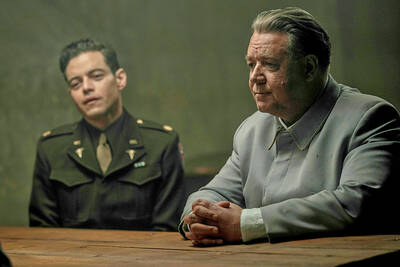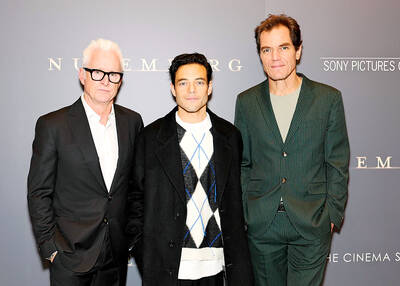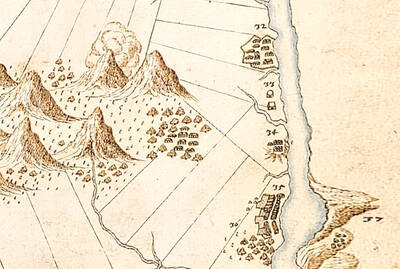With Taipei, indie literature icon Tao Lin (林韜) seems eager to talk about his ethnic background in a way that he wasn’t before.
Lin, 29, has never tried to be a Taiwanese American writer. In previous works, he has drawn mainly from his experience as a Web-savvy urban hipster who experiments with legal and illegal drugs. At first glance, the title of his 2007 novel Eeeee Eee Eeee takes its cue from the 1974 Asian-American anthology Aieeeee!, but Lin actually patterned it after the sound dolphins make to express emotion.
In a step away from his characteristic de-racialized voice, Lin makes it completely clear in Taipei that he’s Taiwanese American. His relationship to Taiwan is “all in the book,” he told the Taipei Times in an e-mail exchange.

Photo courtesy of Tao Lin
Lin was born in Virginia, to a couple who had left Taiwan as part of the 1970s surge of student emigrants. The older Lins returned years 30 years later, after their conviction for investment fraud in Florida, leaving two adult sons in the US. One of them was Tao, who graduated from New York University hoping to become a writer.
And it looks like he’s made it. When writing his first six books, Lin had supported himself by working in restaurants and selling his things on eBay. Vintage offered an advance of US$50,000 for Taipei, freeing him up to write full-time, and the book released June 4 to good and even excellent reviews. Slate has praised the “purposeful maturity, and even a subtle warmth, on display,” while Dwight Garner of the The New York Times liked Taipei for the “paranoid observation[s]” and “flickers of perception, flickers that the author catches as if they were fireflies.”
Still, Taipei has received no reviews that dwell long on its title subject. That’s because when it comes Taipei, Lin has surprisingly little to say: His protagonist Paul avoids Taipei even as he is in it.
On a visit to his parents, Paul smuggles in ecstasy, then takes it with his wife Erin during their stay. As they walk through Ximending’s shopping district in a haze, they talk about their relationship, and Paul feels like they are “in the backseat of a soundproofed, window-tinted limousine.” On this trip, and the one before it, Taipei is absent of history, culture-specific values or even dialogue, because Paul can’t speak much Mandarin.
Outside of the novel, Lin does not have a lot to say about Taipei, either.
In our e-mail correspondence, his responses are sincere and deeply detailed, but also quite vague. My short questions, then longer urgent ones, resulted in a string of koans.
“I know you write more for yourself than for the hypothetical reader. What were you trying to achieve for yourself with Taipei?” I wrote to him last month.
“I was trying to achieve whatever it is that the book is in entirety,” he wrote back. “[The effect is] more complicated and intuitive than one sentence, or two sentences, or ten pages, or a hundred pages. It’s 256 pages, I think.”
Is Taipei autobiographical? Not really, he says.
“I don’t think remembering and imagining are different. Maybe they are not different. Try to remember what you did yesterday. Now try to imagine what you’ll do tomorrow. It kind of seems like imagining presents a less vague scenario, to me. Both actions reference the world of abstraction. And words cannot reproduce concrete reality.”
Lin, when asked to talk about his relationship with Taiwan or his parents in Taiwan, defers to artifacts.
In an e-mail he sends this: an Instagram of an e-mail with a screen grab of a cable news program of a deer tangled in a wooden chair. In Taipei, his father had seen the deer on the news and had photographed it for Lin, who tells me, “My father sends me very funny e-mails sometimes.”
There is no other attempt at narrative, and the news caption in the Instagram is far too blurry to read. A bit like Lin, the deer has been lifted and re-contextualized again and again, only to pop up here, indecipherable, feeling free to exist and not signify a thing.

The Nuremberg trials have inspired filmmakers before, from Stanley Kramer’s 1961 drama to the 2000 television miniseries with Alec Baldwin and Brian Cox. But for the latest take, Nuremberg, writer-director James Vanderbilt focuses on a lesser-known figure: The US Army psychiatrist Douglas Kelley, who after the war was assigned to supervise and evaluate captured Nazi leaders to ensure they were fit for trial (and also keep them alive). But his is a name that had been largely forgotten: He wasn’t even a character in the miniseries. Kelley, portrayed in the film by Rami Malek, was an ambitious sort who saw in

Last week gave us the droll little comedy of People’s Republic of China’s (PRC) consul general in Osaka posting a threat on X in response to Japanese Prime Minister Sanae Takaichi saying to the Diet that a Chinese attack on Taiwan may be an “existential threat” to Japan. That would allow Japanese Self Defence Forces to respond militarily. The PRC representative then said that if a “filthy neck sticks itself in uninvited, we will cut it off without a moment’s hesitation. Are you prepared for that?” This was widely, and probably deliberately, construed as a threat to behead Takaichi, though it

Among the Nazis who were prosecuted during the Nuremberg trials in 1945 and 1946 was Hitler’s second-in-command, Hermann Goring. Less widely known, though, is the involvement of the US psychiatrist Douglas Kelley, who spent more than 80 hours interviewing and assessing Goring and 21 other Nazi officials prior to the trials. As described in Jack El-Hai’s 2013 book The Nazi and the Psychiatrist, Kelley was charmed by Goring but also haunted by his own conclusion that the Nazis’ atrocities were not specific to that time and place or to those people: they could in fact happen anywhere. He was ultimately

Nov. 17 to Nov. 23 When Kanori Ino surveyed Taipei’s Indigenous settlements in 1896, he found a culture that was fading. Although there was still a “clear line of distinction” between the Ketagalan people and the neighboring Han settlers that had been arriving over the previous 200 years, the former had largely adopted the customs and language of the latter. “Fortunately, some elders still remember their past customs and language. But if we do not hurry and record them now, future researchers will have nothing left but to weep amid the ruins of Indigenous settlements,” he wrote in the Journal of